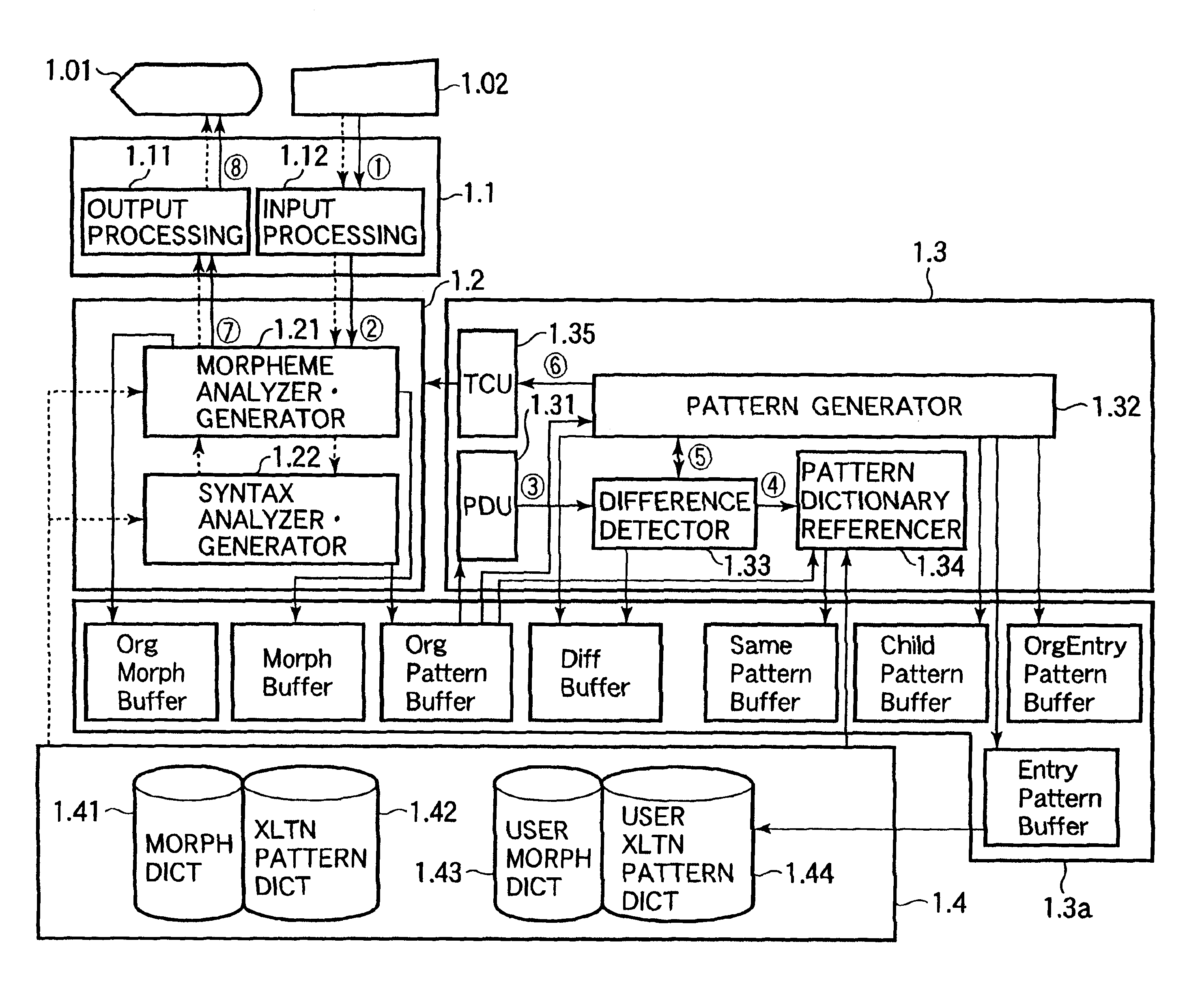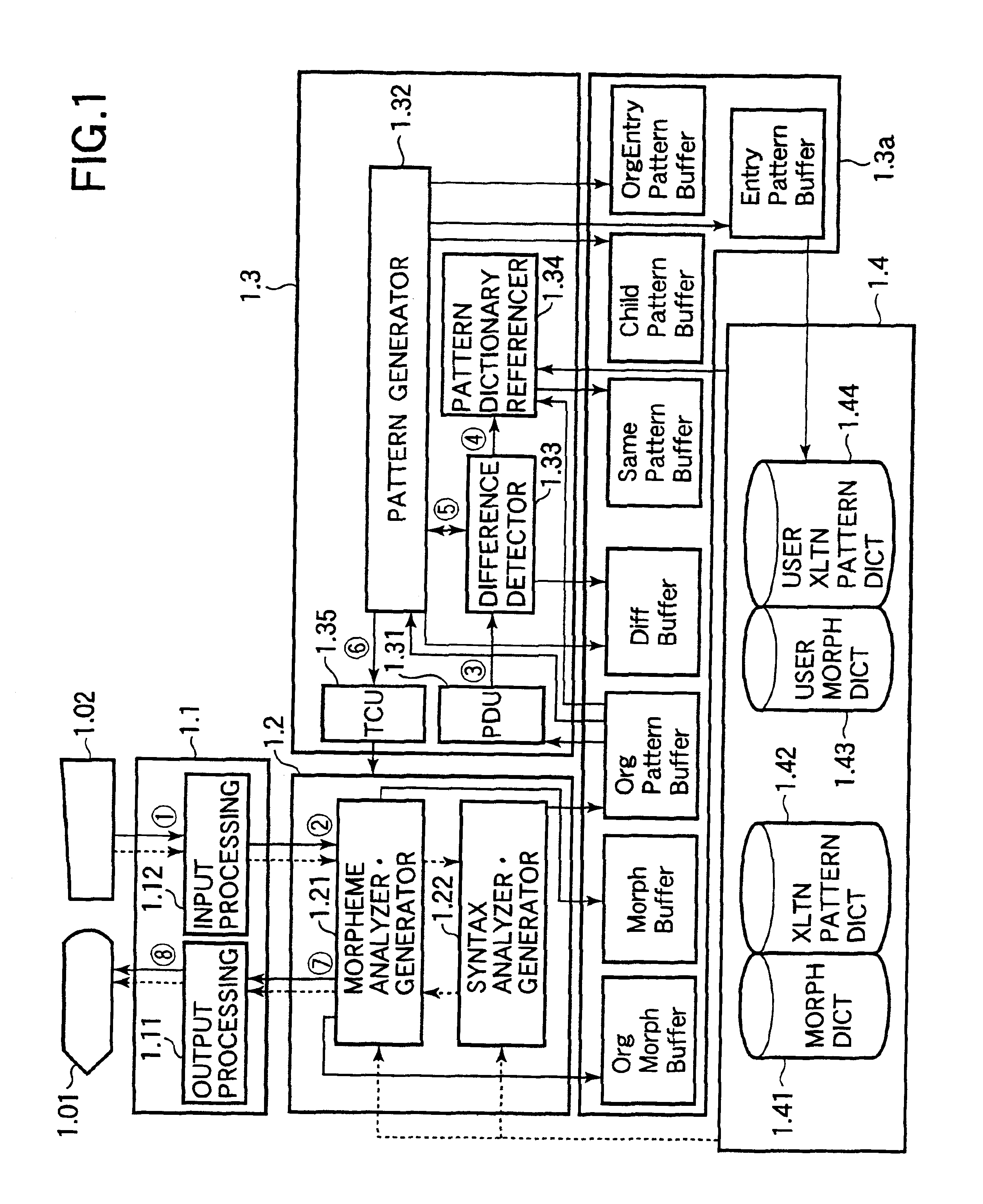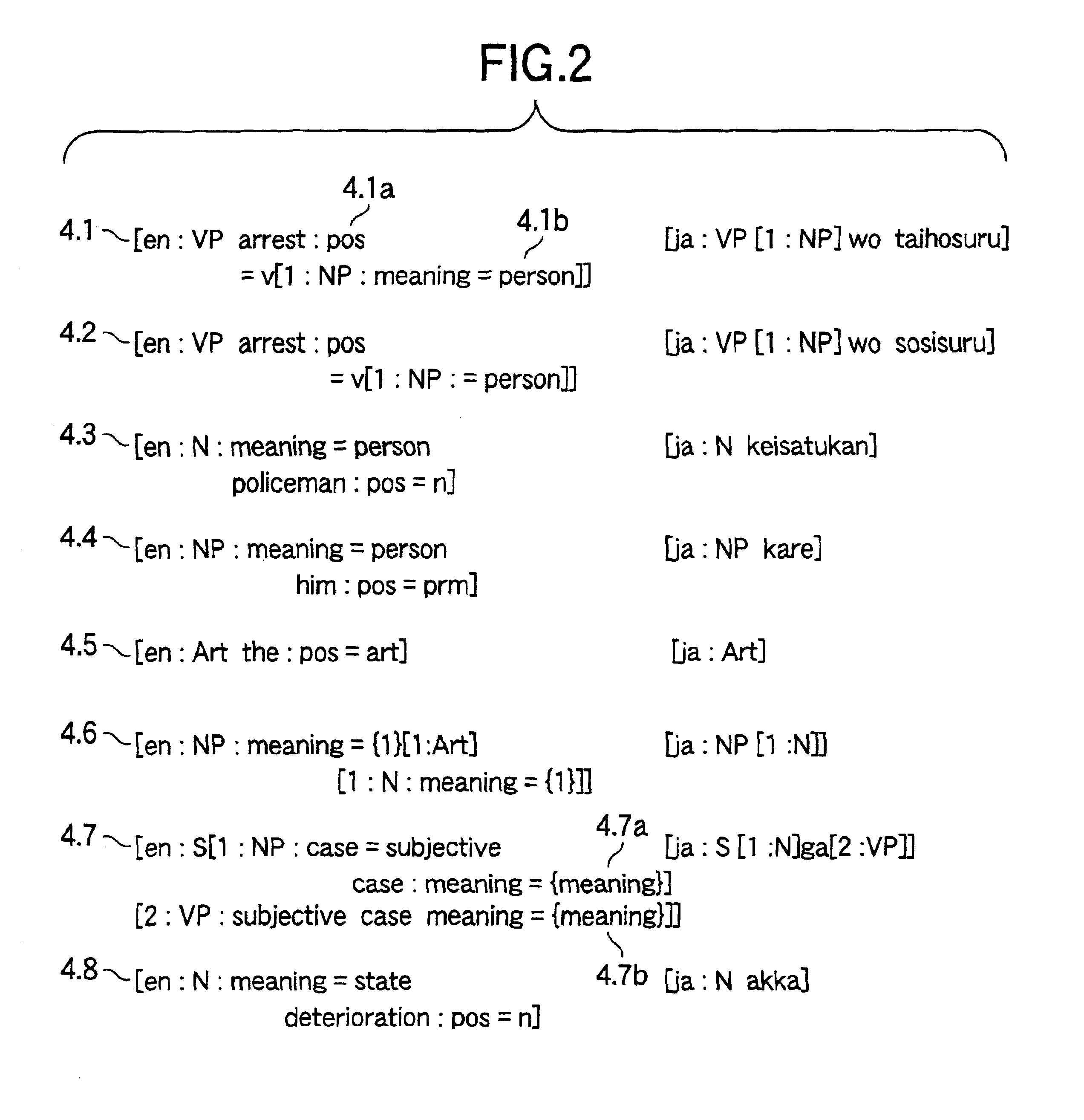Apparatus and method for adding information to a machine translation dictionary
a machine translation and dictionary technology, applied in the field of machine translation, can solve the problems of insufficient addition of specialized dictionaries in cases where the document is to be translated, failure to have any effect on the machine translation process, and editing work that is tedious and troublesom
- Summary
- Abstract
- Description
- Claims
- Application Information
AI Technical Summary
Benefits of technology
Problems solved by technology
Method used
Image
Examples
first embodiment
[0060]In practice, machine translation systems are often constructed by loading processing programs (illustrated in FIGS. 3, 7, 11, 16, and 25) and various types of data (e.g., dictionary data) from a machine-readable recording medium such as a magnetic or optical disk into an information processing apparatus such as a personal computer. In the first embodiment, these operations produce a machine translation system with the functional block structure shown in FIG. 1, which is drawn to emphasize the post-editing function.
[0061]The machine translation system in FIG. 1 can be broadly divided into an input-output unit 1.1, a translation processor 1.2, a post-editing learning unit 1.3, and a dictionary storage unit 1.4.
[0062]The input-output unit 1.1 is divided into an output processing section 1.11 and an input processing section 1.12. The input processing section 1.12 receives source text to be translated, and translated text that has been post-edited by the user (referred to below as ...
second embodiment
[0169]FIG. 27 is a flowchart that shows the sequence of operations for creating translation patterns on the basis of modified sentences in the Steps 5.01 to 5.05 are identical to the corresponding steps in FIG. 16.
[0170]In the second embodiment, the translation pattern creation process does not proceed immediately from the pattern creation process in step 5.04 to the table update process in step 5.05, but first carries out a process of substituting variables for morphemes in the newly created patterns (step 5.06).
[0171]This process uses variables to replace clearly matching parts of the translation pattern stored in EntryPatternBuffer[n], which was stored in a form suitable for adding to the user translation pattern dictionary 1.44.
[0172]For example, in the first translation pattern (n=0) shown in FIG. 19, it is known from the translation patterns stored in OrgPatternBuffer and the associations stored in DiffBuffer that the morpheme “the variable” pairs with the morpheme ‘hensu’. T...
PUM
 Login to View More
Login to View More Abstract
Description
Claims
Application Information
 Login to View More
Login to View More - R&D
- Intellectual Property
- Life Sciences
- Materials
- Tech Scout
- Unparalleled Data Quality
- Higher Quality Content
- 60% Fewer Hallucinations
Browse by: Latest US Patents, China's latest patents, Technical Efficacy Thesaurus, Application Domain, Technology Topic, Popular Technical Reports.
© 2025 PatSnap. All rights reserved.Legal|Privacy policy|Modern Slavery Act Transparency Statement|Sitemap|About US| Contact US: help@patsnap.com



